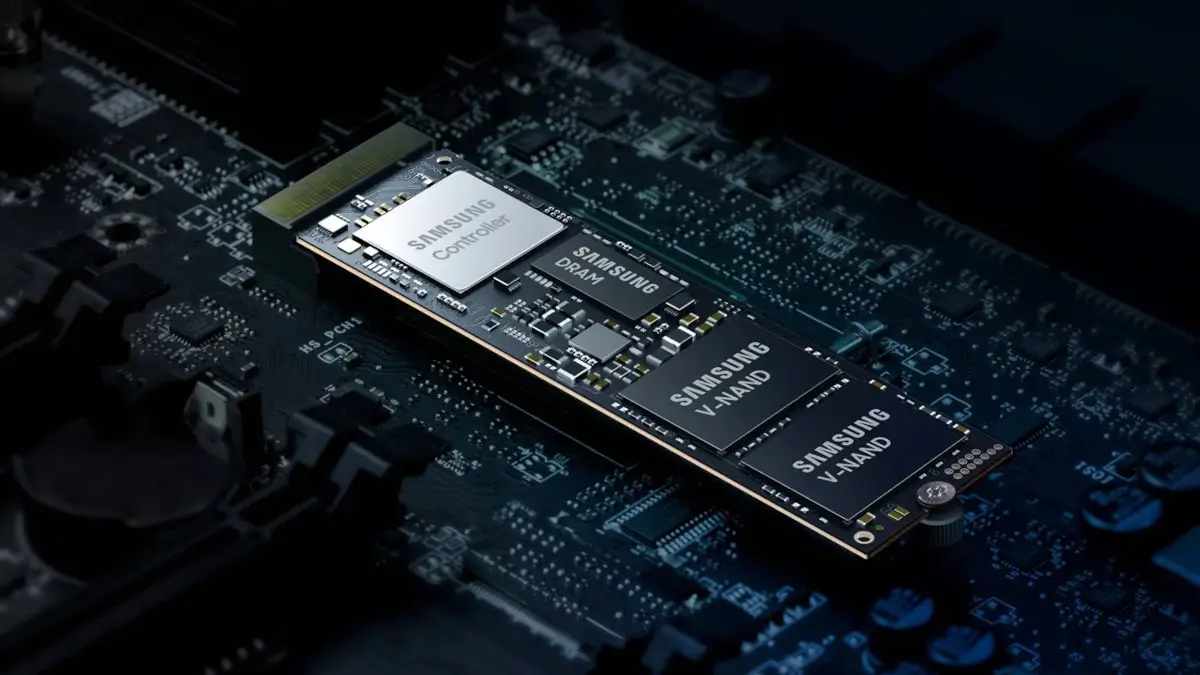In the world of computing, Dynamic Random-Access Memory (DRAM) plays a crucial role in determining the performance and efficiency of modern devices.
From personal computers to smartphones and gaming consoles, DRAM is essential for smooth operations. However, as technology evolves, budget-conscious users may find themselves considering alternatives like Host Memory Buffer (HMB) in devices such as SSDs and NVMe drives.
Let’s understand what DRAM is, why it matters for the best performance, and how HMB can be a viable substitute for budget users who needs basic performance.
What Is DRAM?
Dynamic Random-Access Memory (DRAM) is a type of volatile memory that stores data temporarily while a device is powered on.
It serves as a high-speed intermediary between the processor and the storage drive, ensuring quick access to frequently used data and applications.

Key Characteristics of DRAM:
- Volatility: Loses stored data when the power is turned off.
- Speed: Significantly faster than traditional storage like HDDs or even SSDs.
- Capacity: Provides ample memory for multitasking and running resource-intensive applications.
- Cost: More expensive than slower storage technologies like HDDs.
Why DRAM Matters?
1. Performance Boost:
DRAM directly impacts the speed at which applications load and the overall responsiveness of a system. For gamers, designers, and power users, having sufficient DRAM is critical for seamless performance.
2. Multitasking Efficiency:
Modern applications demand more memory. DRAM allows devices to run multiple processes simultaneously without bottlenecks, which is essential for productivity and gaming.
3. Role in SSDs:
Many SSDs (Solid State Drives) incorporate DRAM as a cache to speed up data access. This improves read/write speeds, making devices more efficient.
The Challenge: DRAM and Budget Constraints.
While DRAM is essential for performance, its inclusion increases the cost of devices. For budget users, this can be a significant barrier. For instance, DRAM-equipped SSDs are more expensive than their DRAM-less counterparts.
To bridge this gap, Host Memory Buffer (HMB) has emerged as a cost-effective solution. But, I still recommend all to get a DRAM based storage in sale.
What is HMB?
Host Memory Buffer (HMB) is a feature in some DRAM-less SSDs that uses the system’s main memory (RAM) as a cache instead of having dedicated DRAM on the SSD itself.
How HMB Works?
It leverages the system’s DRAM to store metadata and frequently accessed data. It will use some portion of system memory (or RAM).
Requires support from the operating system and the SSD controller.
Advantages of HMB for Budget Users.
1. Cost-Effective:
DRAM-less SSDs with HMB are significantly cheaper than DRAM-equipped SSDs, making them an attractive option for budget users.
2. Improved Efficiency:
While not as fast as DRAM-equipped SSDs, HMB-equipped SSDs offer better performance than those without any caching mechanism.
3. Lower Power Consumption:
Devices with HMB consume less power, which can be a boon for laptops and portable devices. But in the same time recommended for basic and light-to-mediocre use.
When Should You Choose HMB Over DRAM?
HMB is an excellent choice for:
Budget Builds: If you’re assembling a cost-effective PC, HMB-equipped SSDs provide a middle ground between price and performance.
Everyday Use: For tasks like browsing, document editing, and streaming, HMB-equipped SSDs deliver satisfactory performance.
Light Gaming: Casual gamers can benefit from the faster load times of HMB SSDs without the higher cost of DRAM SSDs.
Limitations of HMB.
Dependent on System RAM: HMB borrows a portion of your system’s RAM, which can slightly impact overall performance if your system has limited memory.
Not Ideal for Heavy Workloads: For tasks like 4K video editing, large file transfers, or professional gaming, DRAM-equipped SSDs outperform HMB solutions.
Conclusion.
While DRAM remains a cornerstone of high-performance computing, HMB is an innovative alternative for budget-conscious users. By leveraging system memory, HMB-equipped SSDs strike a balance between cost and functionality, making them ideal for everyday tasks and light workloads.
If you’re building a budget system, consider the type of applications you’ll use. For most users, HMB can provide a satisfactory experience, helping you save money without compromising too much on performance.
Takeaway…
For heavy multitaskers and power users, DRAM is worth the investment. But for those on a tight budget, DRAM-less SSDs with HMB support offer a practical and affordable way to enjoy faster storage performance.
Leave a Reply